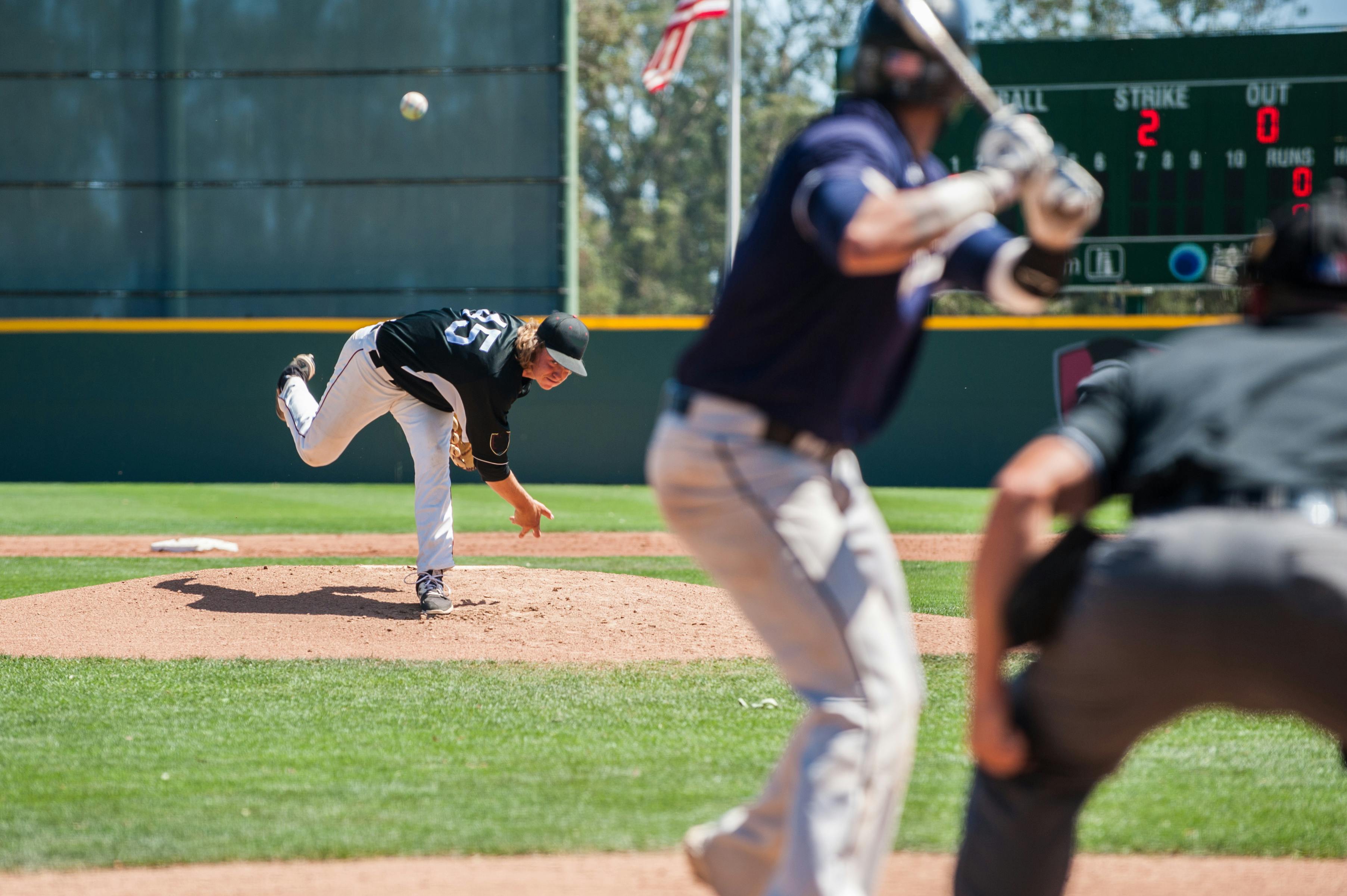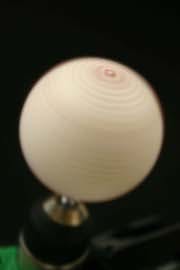Featured courses
- Understanding The Shift by Brandon Ogle
- Two Drills to Improve Outfield Movement and Communication by Grant Young
- The Ultimate Resource For Coaching Youth Baseball by Jackson Chlebowy
- Become a Master at Bunting by Brandon Ogle
- 5 Reasons Why There Is More To Good Base Running Than Just Speed by Brandon Ogle
- Three Injury-Prevention Tips For Your Offseason Pitching Program by Grant Young
- How to Teach Hitting to the Next Generation by Grant Young
- Developing Defensive-Minded Baseball Catchers by Grant Young
- 3 Baserunning Tips to Score More Runs in Baseball by Grant Young
- 5 Outfield Drills to Work on in Season by Alec Burris
- Keys For Scoring More With Runners on First and Third Base by Grant Young
- How to Develop Your Game to Become a Five-Tool Player by Brandon Ogle
- 3 Coaches Share the Keys to Running Baseball Practice the Right Way by Grant Young
- Four Drills to Sharpen a Baseball Hitter’s Vision at the Plate by Grant Young
- Four Quotes to Hit Better With Two-Strikes by Grant Young
- Four of Former MLB Pitcher Juan Nieves’ Movement-Based Pitching Drills by Grant Young
- Two Tips For Developing an Elite Baseball Bullpen by Grant Young
- Overcoming the Four Challenges of Indoor Baseball Practices Because of Weather by Grant Young
- Three Tips to Make Your Baseball Team Mentally Tougher by Grant Young
- Three Priceless Philosophies to Motivate Your Baseball Team by Grant Young
- Three Offseason Baseball Drills to Simulate Competition by Grant Young
- Three Baseball Offseason Strength and Conditioning Essentials by Grant Young
- Important Ways to Improve Your Baseball Team’s Baserunning by Grant Young
- Three Ways to Perfect Hitting Mechanics From an MLB Icon by Grant Young
- Catchers can influence pitchers...for bad or good by Drew Johnson
- Throwing Strikes and Playing Good Defense Equals Wins by Jose Ortiz
- Legendary Indiana Head Baseball Coach Bob Morgan’s Offensive Theory by Grant Young
- Tennessee Head Baseball Coach Tony Vitello on How to Practice Baserunning by Grant Young
- Three Great T-Ball Drills For Youth Baseball Players by Grant Young
- How to Manage a Baseball Pitching Staff by Grant Young
- Three Uncommon Tips to Become a Better Hitter by Grant Young
- How a Baseball Coach Can Develop Strike Throwers by Grant Young
- Drills to Develop Elite Baseball Outfielders by Grant Young
- Baseball Training Exercises to Strengthen Arm and Bat Speed by Grant Young
- How to Use Bunting to Score More Runs by Grant Young
- How To Build An Elite Baseball Infielder by Grant Young
- Three Drills to Improve Your Baseball Team's Infield Play by Grant Young
- Three Keys to Curating a Pitching Staff’s Success by Grant Young
- 3 Techniques to Develop a Baseball Player’s Hitting Approach by Grant Young
- How to Cultivate Confidence Within Your Pitchers by Grant Young
- 5 Every Day Drills To Help You Become A Better Catcher by tyler Linderman
- How to Throw A Curveball by Brandon Ogle
- How to Assemble a Lock-Down Bullpen by Brandon Ogle
- How to Throw a Sinker by Brandon Ogle
- How to be a Smart Baserunner by Brandon Ogle
- Improving a player's slugging average by Phillip Woolgar
- The 8 Fundamentals of Pitching by Drew Johnson
- How to Throw a Deceiving Changeup by Brandon Ogle
- Step Up Your Outfield Defense With These Three Drills by Jose Ortiz
- 8 Baseball Drills Every Player Should Practice by Drew Johnson
- How To Become An Elite Defensive Outfielder by Tyler Linderman
- 5 Tips For Crushing A Curveball by Johnny Grassi
- LEGENDS FOR YOUTH INCLUSION BASEBALL CLINIC by Phil
- Fourteen Ways To Turn A .300 Hitter Into A .210 Hitter by Jay P. Granat, Ph.D.
- How To Become The Ideal Leadoff Man by Brandon Ogle

5 Tips For Crushing A Curveball
How To Hit A Curveball
There goes the old saying that when life throws you a curveball, hit it out of the park. However, as easy as that sounds, hitting a curveball is one of the toughest tasks that every batter will face over the course of the game. The movement on a curveball differs from pitcher to pitcher. The way the pitcher grips the ball, and their delivery of the pitch has an effect on the trajectory, and the aerodynamics on the way to the plate. The 12-to-6 curve is one of the most common curveballs fans are familiar with, which references the vertical movement from starting high and ending low. Another breaking pitch is the 11-to-5 curve, which entails more horizontal movement but not as much as vertical. There are also curveballs called “slurvy” curves, or sliders, that do not have much vertical movement, but have a strong amount of horizontal movement. One of the hottest pitchers right now who throws a nasty 12-to-6 curve is Arizona Diamondbacks pitcher Zach Greinke, who has completely left batters stone cold and motionless at the plate. One memorable at bat came against White Sox second-baseman Yomer Sanchez, where he threw his 65mph eephus curveball, which is defined as a very low-speed junk ball. The end result was Sanchez completing his swing before the pitch even got there. Click here to watch to admire this devastating and demoralizing pitch.
Do you want to become the next person who looks as lost as Yomer Sanchez at the plate against someone who has an outstanding curveball? I doubt anyone wants to look like a fool at the plate and this is why I have produced my top 5 steps of hitting a curveball.
1. Study the pitcher: While he is throwing in-game, or in the bullpen, analyze the pitcher’s movements in his windup. See if the pitcher changes up his release points depending on the pitch he is throwing. It is essential to find out if there are any potential tells in his windup of when he will throw a curveball. For example, a twitch in the glove or an adjustment in the windup. Every advantage will count because batters have under a second to determine the pitch, whether the pitch is a ball or strike, and the speed of the pitch. Watch the pitchers arm and observe whether or not it snaps downward, this is an indication a curveball.

2. Recognize the pitch early: As mentioned before there are various trajectories with a curveball that have the ability to throw off batters and lead to an off balanced swing. Curveballs with a lot of topspin will create high pressure on the top of the ball, which leads to a downward and sinking trajectory for the ball. Knowing how strong the topspin is will help you identify if the pitch is a 12-6 curveball versus a slider. Read the ball out of the pitcher’s hand, and never anticipate a curveball will be thrown. It is much harder to think curveball, and react to a fastball. There simply isn’t enough time to change your approach mid-pitch when the pitcher is throwing heat. When a curveball is thrown, the spin creates a small red dot from the laces, which indicates a breaking pitch. Pick up on this early, and react to the movement.
3. Analyze previous at-bats: Were you out in front and completely whiffed in your first at bat against a curveball. Think about the type of stance and approach you came up to the plate. The best stance that I recommend is having your feet shoulder apart and keeping your hands and body back. Make sure your weight stays at least 70% back. The most common mistake batter make when hitting a curveball is having your weight out front, anticipating an off-speed pitch. Keep your weight back, and react to the ball as it leaves the pitcher’s hand.
4. Practice and Utilize Multiple Curveball Drills: One of the best drills for a batter is the underhand recognition drills, which requires having a partner 15 feet behind a screen tossing you pitches underhand. This partner will constantly mix up the speeds and locations of these pitches in order to help the batter get used to the hesitation that is typical of batters when they face breaking pitches. You can also find baseball coaching drills focused on hitting by great coaches such as hall of famer Tony Gywnn.
5. Enhance patience at the plate with lobs: Similar to the underhand recognition drill, have someone behind a screen, but instead have them throw just lobs over the screen. This will allow you to build the mental strength to understand where the ball enters the hitting zone so that you can rocket the ball straight up the middle. It also allows you to stay inside the ball, meaning waiting longer on the pitch to get deeper in the zone for the batter to turn on it and go opposite field. You do not want to be out in front of the plate, because there will be minimal power behind the swing since the hips have already opened up and the bat is already in mid-swing when the pitch isn’t fully at the plate yet.
Sources:
Bahill, Terry. “Bahill's Science of Baseball Research.” Bahill's Science of Baseball Research, 11 Aug. 2011, sysengr.engr.arizona.edu/baseball/index.html.



